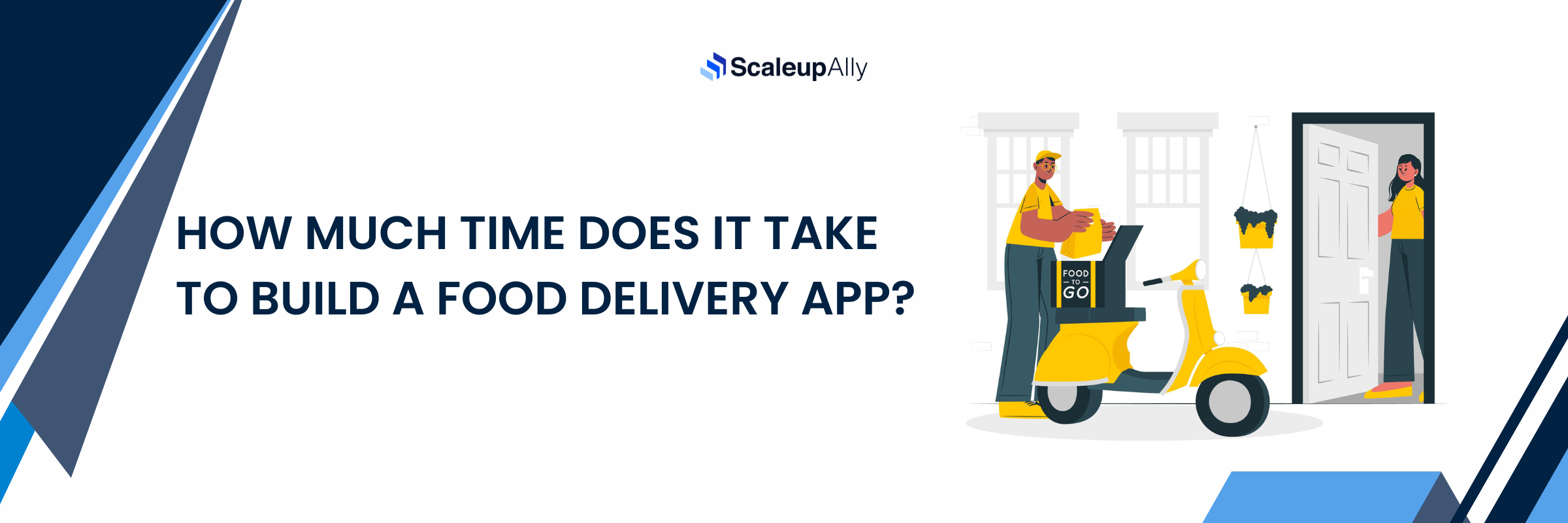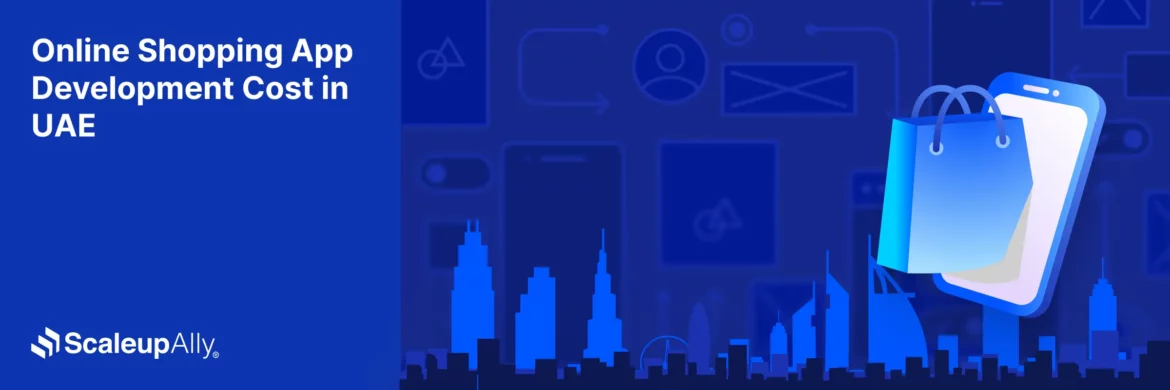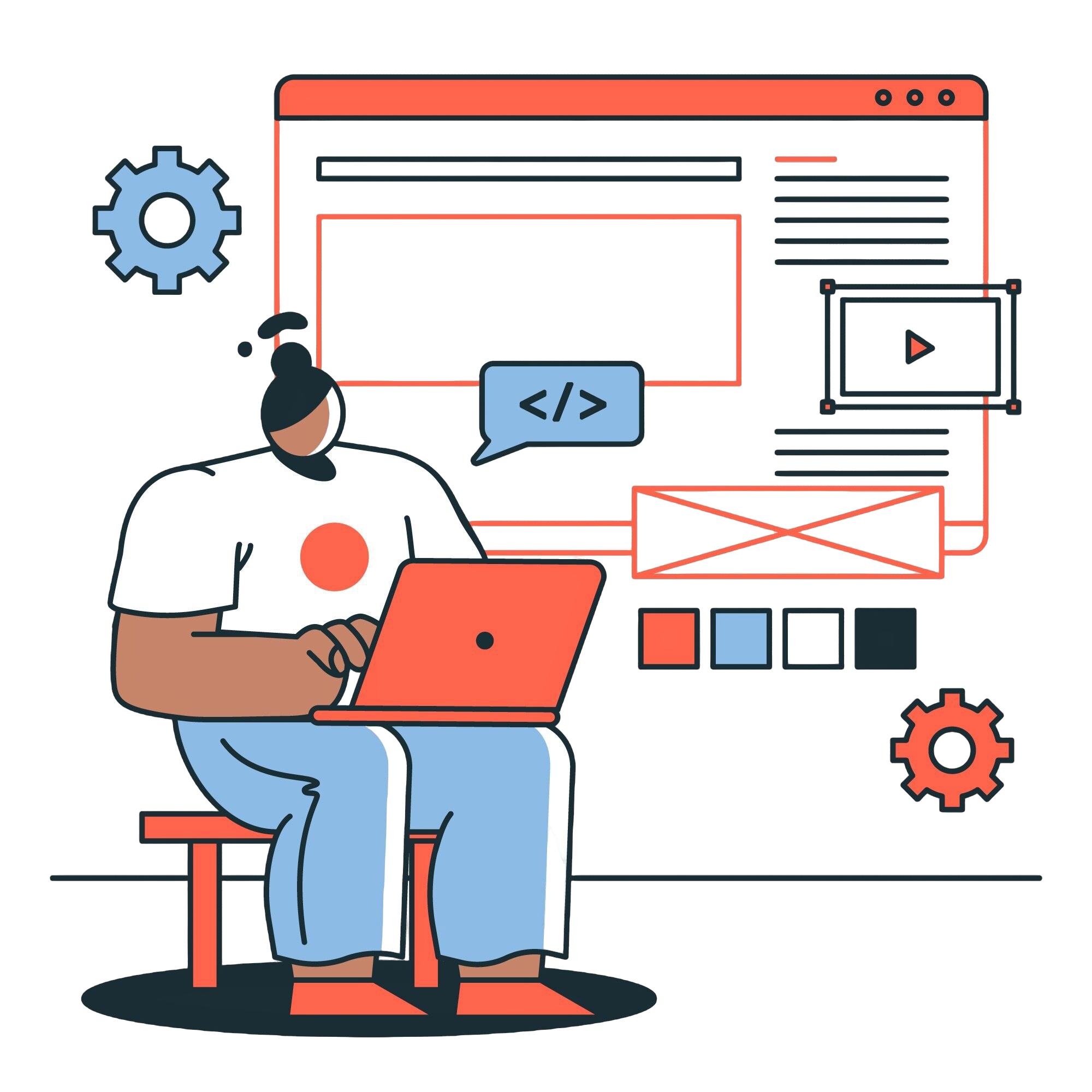
How Much Time Does it Take to Build a Food Delivery App?
Manu Jain | September 29, 2023 , 11 min read
Table Of Content
Are you an entrepreneur considering developing a food delivery app like Swiggy or UberEats? Wondering how long it will take to bring your app idea to life?
In this article, we’ll explore the factors that affect the development time of a food delivery app, the actual time taken to build a food delivery app and provide you with insights on how to speed up the development process.
So let’s dive in!
Key Takeaways
- Simple apps (basic features) take 3-4 months, medium apps (additional features like order tracking) require 4-6 months, and complex apps (real-time tracking, personalized recommendations) need 9+ months.
- The time to build a food delivery app depends on app complexity, features, technology stack, development team expertise, and the development process used.
- Extensive features and integrations increase development time; focusing on core features can streamline the process.
- Using popular, well-supported technologies accelerates development, while niche stacks may extend timelines.
- Experienced teams and agile methodologies (Scrum, Kanban) help ensure efficient, iterative development and quicker delivery.
- Defining clear requirements, a reliable tech stack, and minimizing changes during development are key to speeding up the development process.
Factors that Affect the Development Time of a Food Delivery App
- Factors that Affect the Development Time of a Food Delivery App
- How Long Does It Take to Build a Food Delivery App?
- Tips for Speeding Up the Development Process
- How ScaleupAlly Can Help You Build Food Delivery Apps Faster?
- Conclusion
- Frequently Asked Questions
- Other Articles Around Mobile App Development Timelines
Building a food delivery app involves various factors that can impact the time it takes to develop the app. Here are some key factors to consider:
Complexity of the App
The complexity of your food delivery app is a pivotal factor influencing its development duration. When contemplating the creation of your app, it’s essential to understand that a simpler application, featuring fundamental functions such as menu browsing, order placement, and payment integration, will naturally require less time for development.
In contrast, a more intricate app, boasting advanced features like real-time order tracking, scheduling options, and personalised recommendation algorithms, will demand a longer development timeline. Put simply, the level of complexity in your app directly correlates with the amount of time needed to bring it to life.
Features and Functionalities
When it comes to determining the development time of your food delivery app, the number of features and functionalities you envision play a pivotal role. The more extensive and sophisticated the features, the more time it will take to bring your app to life. Consider elements such as user registration, menu customization, order tracking, and seamless integration with third-party services – these all contribute to the overall development timeline.
To optimise your project’s efficiency, it’s imperative to strategically prioritise the essential features that directly align with your app’s core value proposition, ensuring that you make the most of your development time and resources.
Also Read: Cost To Build a Food Delivery App
Technology Stack
The selection of a technology stack is a pivotal factor influencing the development timeline of your food delivery app. Opting for contemporary and widely adopted technologies has the potential to accelerate the development journey significantly. This is because developers are already well-versed in these technologies, enabling them to operate efficiently and seamlessly.
Conversely, embracing less conventional or niche technologies may necessitate additional time investment for research, skill acquisition, and troubleshooting, which can potentially extend the overall development timeframe.
Development Team
Your choice of a development team also affects the time taken to build your food delivery app. The team’s size and expertise wield significant influence, as they can either expedite or hinder progress. A larger team with specialised roles can effectively parallelize development tasks, propelling your project forward at a brisk pace.
Furthermore, the decision to onboard experienced developers, well-versed in app development best practices, can prove instrumental in sidestepping common pitfalls and ensuring a streamlined development timeline. In essence, your development team is not just a group of individuals but a critical factor that can shape the speed and success of your food delivery app venture.
Development Process
The development process you follow can also impact the development time of your food delivery app. Opting for agile methodologies such as Scrum or Kanban, which prioritise iterative development and regular feedback loops, can have a huge impact on accelerating the development process and delivery of essential features.
Moreover, integrating prototyping tools and conducting thorough user testing throughout the development journey can swiftly pinpoint and resolve usability concerns, ultimately saving valuable time.
Having delved into the various factors that impact the development time of a food delivery app, it’s time to delve deeper into the actual timeline required to construct such an app.
How Long Does It Take to Build a Food Delivery App?
The development time for a food delivery app can vary depending on its complexity. Let’s break it down into three categories: Sime, Medium and Complex
Simple App Development (3-4 months)
A simple food delivery app typically has a straightforward user interface with no more than five screens. It allows users to browse menus, place orders, and make payments. These apps usually don’t require extensive backend integration or complex features. With a dedicated development team and efficient project management, you can expect to build a simple food delivery app within 3-4 months.
Medium App Development (4-6 months)
A medium difficulty food delivery app includes additional features like user registration, order tracking, and integration with third-party services. It may also have more screens and user interactions, requiring more development time. With an experienced development team and proper planning, you can build a medium difficulty food delivery app within 4-6 months.
Complex App Development (9+ months)
A complex food delivery app involves advanced features like real-time tracking, personalised recommendations, and complex backend integrations. These apps require extensive development, testing, and optimization to ensure a seamless user experience. Building a complex food delivery app can take 9 months or more, depending on the specific requirements and complexity of the app.
It’s important to note that these timeframes are estimates and can vary based on various factors, including the size of the development team, the expertise of the team members, features you want to add and the availability of resources.
Tips for Speeding Up the Development Process
While the development time of a food delivery app depends on various factors, there are ways to speed up the development process and ensure timely delivery. Here are some tips you can consider:
- Use a Proven Development Process: Follow an agile development methodology like Scrum or Kanban to ensure efficient collaboration, frequent feedback, and iterative development.
- Work with an Experienced Development Team: Hire a development team with expertise in building food delivery apps. Their experience and knowledge will help streamline the development process and avoid common pitfalls.
- Use a Reliable Technology Stack: Choose a technology stack that is well-established, reliable, and widely used in the industry. This will help ensure smooth development and minimise the time spent on troubleshooting and learning new technologies.
- Minimise Changes to the Requirements: Clearly define the requirements of your app upfront and minimise scope creep during the development process. Changes to the requirements can significantly impact the development timeline, so it’s essential to have a clear vision from the start.
By following these tips, you can optimise the development process and expedite the time required to build your food delivery app.
How ScaleupAlly Can Help You Build Food Delivery Apps Faster?
Are you looking to develop an on-demand food delivery app? Look no further than ScaleupAlly, an IT service company that specialises in on-demand food delivery app development. We understand the growing demand for food delivery services and the need for businesses to have a reliable and user-friendly platform.
With our restaurant IT services & solutions, we can help you build your food delivery app faster than ever before.
We have a team of skilled developers who are well-versed in the latest technologies and trends in the food industry. They have the knowledge and expertise to create a seamless and intuitive app that will attract and retain customers. Our developers understand the importance of a user-friendly interface and smooth navigation, ensuring that your customers have a hassle-free experience while ordering their favourite meals.
In addition to our skilled developers, we also provide a range of features and functionalities that can be customised to meet your specific business needs.
Whether you want to integrate multiple payment gateways, offer real-time tracking of orders, or provide personalised recommendations based on customer preferences, we have got you covered. Our team will work closely with you to understand your requirements and deliver a tailor-made solution that exceeds your expectations.At ScaleupAlly, we build, manage and care for our distributed teams like no one else. It’s a whole new approach to make you rethink what your idea is capable of.
Conclusion
The development time of a food delivery app depends on various factors, including the complexity of the app, the features and functionalities, the technology stack, the development team, and the development process.
By understanding these factors, you can estimate the development time for your app and make informed decisions about your project.
It’s important to remember that building a high-quality food delivery app takes time and careful planning. By working with an experienced development team and following best practices, you can ensure the successful and timely delivery of your food delivery app.
Frequently Asked Questions
Q: What are the essential features of a food delivery app?
Essential features of a food delivery app include user registration, menu browsing, order placement, payment integration, order tracking, and restaurant listings. More advanced features may include real-time tracking, scheduling options, and personalised recommendations.
Q: What technologies are commonly used to build food delivery apps?
Common technologies to build a food delivery app include mobile app development platforms like React Native or Flutter for cross-platform apps and native development for specific platforms (iOS and Android). Backend technologies often include databases like MySQL or MongoDB, along with server-side scripting using languages like Python, Ruby, or Node.js.
Q: Do I need to build my food delivery app from scratch, or can I use a white-label solution?
You can consider both options. Building from scratch offers more customization but may take longer and cost more. White-label solutions are pre-built apps that can be customised to your brand and may be faster to launch, but they may have limitations in terms of unique features.
Q: How do I choose the right development team for my food delivery app project?
Look for a development team with experience in building similar apps. Check their portfolio, ask for references, and evaluate their communication and project management skills. Make sure they understand your vision and requirements.
Other Articles Around Mobile App Development Timelines
Related Blogs

Top 20 Emerging Technologies of 2026
Discover the top 20 emerging technologies of 2026. Explore which innovations are driving change across healthcare, finance, manufacturing, and other crucial industries.
ScaleupAlly Team
Dec 16 ,
9 min read

Online Shopping App Development Cost in UAE | Pricing & Factors Explained
Understand UAE online shopping app development costs in 2025 with pricing ranges, influencing factors, hidden fees, timeframes, and expert savings tips.
Suprabhat Sen
Nov 29 ,
13 min read

Software Development Timeline: Phases, Duration & Estimation Guide
Understand the software development timeline with phase durations, key factors, hidden delays, and practical methods to estimate project time.
Suprabhat Sen
Nov 29 ,
16 min read



